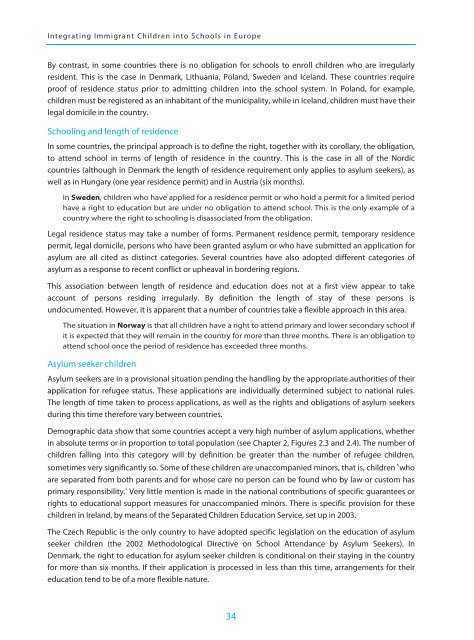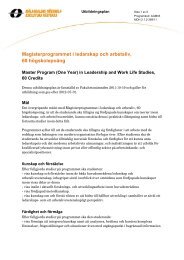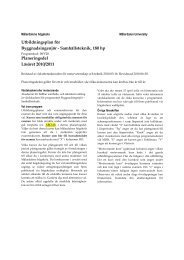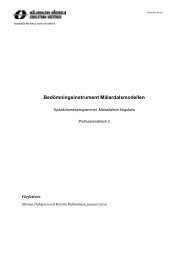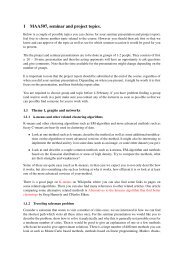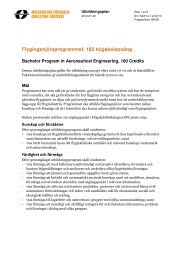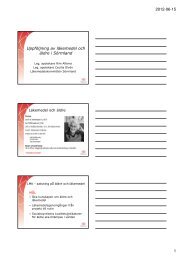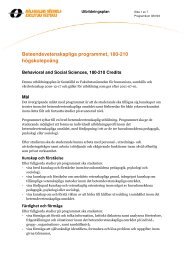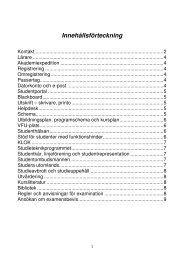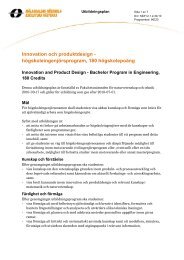Integrating Immigrant Children into Schools in Europe
Integrating Immigrant Children into Schools in Europe
Integrating Immigrant Children into Schools in Europe
Create successful ePaper yourself
Turn your PDF publications into a flip-book with our unique Google optimized e-Paper software.
<strong>Integrat<strong>in</strong>g</strong> <strong>Immigrant</strong> <strong>Children</strong> <strong><strong>in</strong>to</strong> <strong>Schools</strong> <strong>in</strong> <strong>Europe</strong>By contrast, <strong>in</strong> some countries there is no obligation for schools to enroll children who are irregularlyresident. This is the case <strong>in</strong> Denmark, Lithuania, Poland, Sweden and Iceland. These countries requireproof of residence status prior to admitt<strong>in</strong>g children <strong><strong>in</strong>to</strong> the school system. In Poland, for example,children must be registered as an <strong>in</strong>habitant of the municipality, while <strong>in</strong> Iceland, children must have theirlegal domicile <strong>in</strong> the country.School<strong>in</strong>g and length of residenceIn some countries, the pr<strong>in</strong>cipal approach is to def<strong>in</strong>e the right, together with its corollary, the obligation,to attend school <strong>in</strong> terms of length of residence <strong>in</strong> the country. This is the case <strong>in</strong> all of the Nordiccountries (although <strong>in</strong> Denmark the length of residence requirement only applies to asylum seekers), aswell as <strong>in</strong> Hungary (one year residence permit) and <strong>in</strong> Austria (six months).In Sweden, children who have applied for a residence permit or who hold a permit for a limited periodhave a right to education but are under no obligation to attend school. This is the only example of acountry where the right to school<strong>in</strong>g is disassociated from the obligation.Legal residence status may take a number of forms. Permanent residence permit, temporary residencepermit, legal domicile, persons who have been granted asylum or who have submitted an application forasylum are all cited as dist<strong>in</strong>ct categories. Several countries have also adopted different categories ofasylum as a response to recent conflict or upheaval <strong>in</strong> border<strong>in</strong>g regions.This association between length of residence and education does not at a first view appear to takeaccount of persons resid<strong>in</strong>g irregularly. By def<strong>in</strong>ition the length of stay of these persons isundocumented. However, it is apparent that a number of countries take a flexible approach <strong>in</strong> this area.The situation <strong>in</strong> Norway is that all children have a right to attend primary and lower secondary school ifit is expected that they will rema<strong>in</strong> <strong>in</strong> the country for more than three months. There is an obligation toattend school once the period of residence has exceeded three months.Asylum seeker childrenAsylum seekers are <strong>in</strong> a provisional situation pend<strong>in</strong>g the handl<strong>in</strong>g by the appropriate authorities of theirapplication for refugee status. These applications are <strong>in</strong>dividually determ<strong>in</strong>ed subject to national rules.The length of time taken to process applications, as well as the rights and obligations of asylum seekersdur<strong>in</strong>g this time therefore vary between countries.Demographic data show that some countries accept a very high number of asylum applications, whether<strong>in</strong> absolute terms or <strong>in</strong> proportion to total population (see Chapter 2, Figures 2.3 and 2.4). The number ofchildren fall<strong>in</strong>g <strong><strong>in</strong>to</strong> this category will by def<strong>in</strong>ition be greater than the number of refugee children,sometimes very significantly so. Some of these children are unaccompanied m<strong>in</strong>ors, that is, children ‘whoare separated from both parents and for whose care no person can be found who by law or custom hasprimary responsibility.’ Very little mention is made <strong>in</strong> the national contributions of specific guarantees orrights to educational support measures for unaccompanied m<strong>in</strong>ors. There is specific provision for thesechildren <strong>in</strong> Ireland, by means of the Separated <strong>Children</strong> Education Service, set up <strong>in</strong> 2003.The Czech Republic is the only country to have adopted specific legislation on the education of asylumseeker children (the 2002 Methodological Directive on School Attendance by Asylum Seekers). InDenmark, the right to education for asylum seeker children is conditional on their stay<strong>in</strong>g <strong>in</strong> the countryfor more than six months. If their application is processed <strong>in</strong> less than this time, arrangements for theireducation tend to be of a more flexible nature.34


